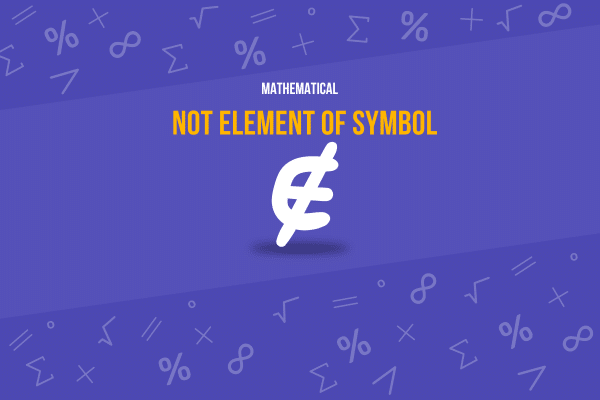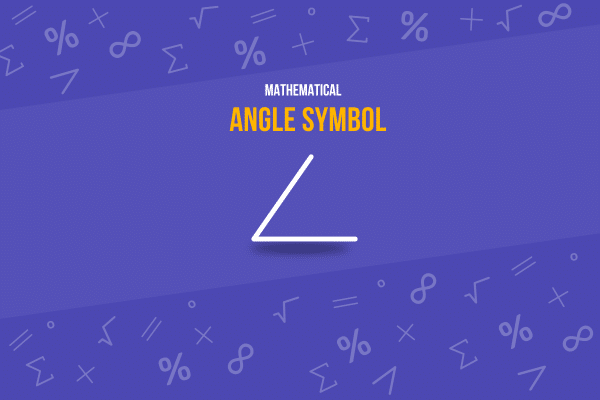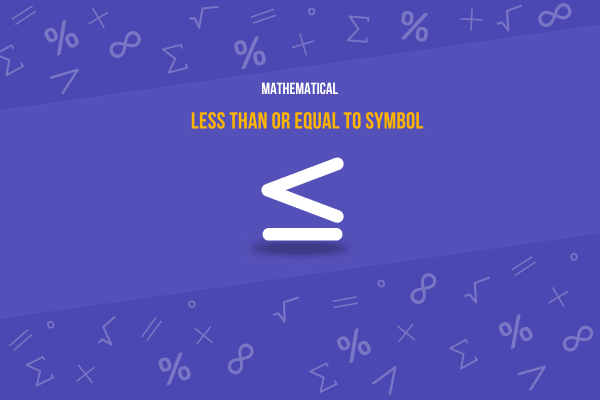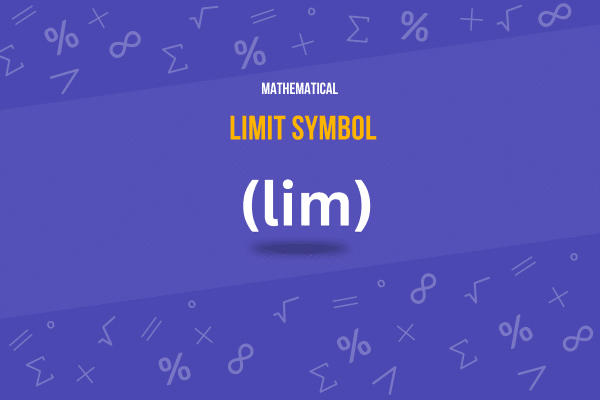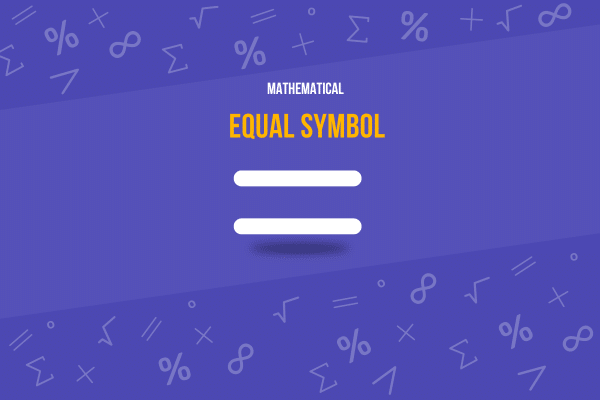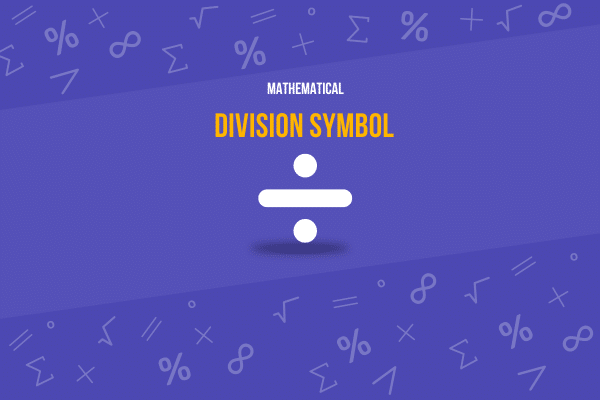What is the Degree Symbol?
You’ve seen it countless times before—that tiny circle hovering above numbers in a recipe, a math problem, or perhaps on your phone’s weather app. It’s the degree symbol, a key player in daily life. But do you truly understand its versatility and importance?
As you read this post, you’ll learn the origins and usage of the degree symbol and how to use it across different devices and platforms. This seemingly simple symbol contains information applicable to numerous disciplines, such as mathematics, physics, and geography.
There’s a lot to appreciate about the degree symbol, and we promise you that by the end of this read, you’ll never look at it the same way again.
Let’s get started!
Fast Facts
°
Degree Symbol
| Attribute | Information |
|---|---|
| Symbol Name | Degree Sign |
| Unicode | U+00B0 |
| Image | ° |
| Brief Description | Used to denote degrees of temperature, angles, etc. |
| Unicode Version and Date | Unicode 1.1, released in June 1993 |
| Unicode Block Name | Latin-1 Supplement |
| Plane | Basic Multilingual Plane |
| Script | Common |
| Category | Symbol, other (So) |
| Bidirectional Class | European Number Terminator (ET) |
| Combining Class | 0 (not a combining character) |
| Character is Mirrored | No |
| HTML Entity | ° or ° |
| CSS | \00B0 |
| UTF-8 Encoding | 0xC2 0xB0 |
| UTF-16 Encoding | 0x00B0 |
| UTF-32 Encoding | 0x000000B0 |
| ASCII Code | 176 (Extended ASCII) |
Here’s What You Will Find

Degree Symbol
The degree symbol (°) is a mathematical symbol used to denote degrees of arc in geometric measurements, such as angles, and in various scientific fields, like temperature and geographic coordinates. In Geometry, it is used to express angles; for example, a right angle is 90°. In temperature measurements, it precedes units like Celsius (°C) and Fahrenheit (°F) to indicate the temperature scale. The degree symbol helps specify measurements precisely and enhances clarity in mathematical and scientific expressions.
The degree symbol (°) is a small circle used in many contexts. It is most commonly used to represent degrees of arc (in geographical coordinates or in time measurements) or degrees of temperature. This mathematical symbol is widely used worldwide, appearing in scientific and non-scientific contexts.
Other Names
While commonly referred to as such, the degree symbol goes by a few other names in specific contexts. It may be called the “degree sign” when denoting angles in mathematics and physics. In geographical contexts, particularly when noting coordinates, it’s often known as the “degrees of arc” symbol. Furthermore, in weather reports and culinary recipes, where temperature is the key focus, it’s typically called the “degrees of temperature” symbol.
Degree Symbol Meaning
The degree symbol, denoted by a small superscript circle (°), is a powerful symbol used in various contexts to represent the concept of ‘degree.’ It serves as a unit of measurement in multiple fields. In mathematics, the degree is a plane angle measure, signifying that a circle is divided into 360 equal degrees. Thus, an angle represented as 45° is subtended by 1/8th of a circle. In geography, the degree symbol is used in the system of latitude and longitude, marking precise locations on the Earth’s surface.
Each degree of latitude or longitude represents 1/360th of the way around the globe. The degree symbol represents a relative temperature measurement measurement on a predefined scale. Whether it’s Celsius, Fahrenheit, or the historical Réaumur scale, the degree symbol denotes a specific temperature relative to the scale’s defined zero and endpoint.
This remarkable versatility of the degree symbol in representing different concepts of ‘degree’ across disciplines illustrates its broad significance in our understanding of the world.
Degree Symbol (°) Symbolism
The degree symbol (°) is a typographical symbol that is used in several contexts, most commonly to denote degrees of temperature and angles. Beyond its basic uses, the degree symbol carries various symbolic significances depending on the context in which it is employed. Here’s a comprehensive look at the symbolism associated with the degree symbol:
Symbolism in Different Contexts
Temperature Measurement
In meteorology, climate science, and everyday weather reporting, the degree symbol represents temperature in Celsius or Fahrenheit. It symbolizes the precise measurement of atmospheric conditions, crucial for weather forecasting, scientific analysis, and public awareness.
Geometry and Trigonometry
In mathematics, particularly in geometry and trigonometry, the degree symbol denotes angles. Here, it symbolizes the concept of division and measurement of a circle, which is fundamental to understanding spatial relationships and properties of shapes.
Geographical Coordinates
The symbol is used in geography to denote latitude and longitude, crucial for navigation and geographical orientation. It symbolizes location and place on the Earth, indicating how far north, south, east, or west a point lies from the Equator or the Prime Meridian.
Precision and Accuracy
More abstractly, the degree symbol can symbolize precision and meticulousness in various fields of science and engineering. Its use in technical contexts underscores the importance of exactitude in measurements.
Symbolism in Art and Literature
In artistic and literary contexts, the degree symbol might be used more metaphorically:
- Art: Artists may use the degree symbol in works that explore themes of change or transition, as it can represent a ‘degree’ of difference or shift.
- Literature: Writers might employ the symbol when discussing themes of measurement, whether emotional, psychological, or spatial, as a literary device to add depth to their narratives.
Modern Usage in Pop Culture
In modern digital communication, particularly in texting and social media, the degree symbol might be used informally to indicate levels of emotion or intensity. For example, someone might say they are “100° excited!” to convey extreme enthusiasm.
The degree symbol, while small, plays a vital role across various scientific, mathematical, and geographic fields. Its symbolism extends from the literal representation of measurement to more metaphorical interpretations involving precision, change, and location. This symbol helps convey complex information in a simple form, making it an essential tool in academic and everyday contexts.
Degree Symbol Unicode
Unicode is a computing industry standard designed to consistently and uniquely encode, represent, and handle text expressed in most of the world’s writing systems. Developed by the Unicode Consortium, a non-profit corporation, this system has been adopted by major tech companies, ensuring compatibility and standardization across platforms, devices, and locales.
The degree symbol has its own specific Unicode: U+00B0. It can be added to HTML documents using the entity ° or °.This designation means that you’ll get the degree symbol if you input this Unicode no matter where you are or what device you’re using. It’s a fundamental part of maintaining consistency in digital communication and information exchange, allowing us to accurately express temperature, angle measurements, and geographical coordinates in a digital world.
ASCII Representation
ASCII Code
The basic ASCII set (which consists of 128 characters) does not have a degree symbol. The degree symbol is in the extended ASCII set, represented by the byte value 176 (B0 in hexadecimal).
Degree Symbol Uses
The degree symbol plays an integral role in various fields and disciplines. In mathematics, it’s crucial to denote angles. When you see 90°, for instance, you’ll understand that it refers to a right angle. In geography, it’s used to represent geographic coordinates, marking degrees of latitude and longitude. Perhaps most familiar to many people is its role in expressing temperature.
Both the Celsius and Fahrenheit scales use the degree symbol to denote temperatures, whether the balmy 30° of a summer day or the chilly -5° of a winter morning. Additionally, the symbol finds usage in certain scientific, engineering, and computational contexts. Its versatility is remarkable, transcending different measurement systems and fields of study.
The degree symbol (°) is widely recognized and utilized in various fields. Below are some of the primary uses of the degree symbol:
- Temperature Measurement: It indicates degrees in temperature scales, such as Celsius (°C) and Fahrenheit (°F). For instance, 32°F signifies the freezing point of water, while 100°C is the boiling point.
- Geographic Coordinates: These are used in geographical coordinates to denote degrees of latitude and longitude. For example, 34°N 118°W pinpoints a location on the Earth’s surface.
- Angular Measurements: The degree symbol signifies angles in mathematics and various sciences. A full circle is 360 degrees.
- Medical and Dental Formulas: These are employed in medical and dental formulas to specify angles of movement or alignment, such as in orthodontics.
- Precision and Accuracy in Instruments: Indicates degrees in scientific instruments and tools that measure angles, such as protractors and sextants.
Degree Symbol Examples
The degree symbol (°) is used across various contexts to denote measurements and specifications. Here are a few common examples:
- Temperature: The degree symbol is crucial in expressing temperature. For instance, “20°C” indicates 20 degrees Celsius, a common room temperature, while “68°F” denotes 68 degrees Fahrenheit, often considered a comfortable indoor temperature.
- Geographic Coordinates: These are used to define locations around the globe. “45°N 122°W” represents the geographic coordinates for Portland, Oregon, specifying 45 degrees north of the Equator and 122 degrees west of the Prime Meridian.
- Angles in Mathematics and Science: The symbol is fundamental in geometry and physics to denote angles. For example, in a right triangle, one angle might measure “90°”, indicating a right angle.
- Cooking and Baking: Recipes may specify oven temperatures using the degree symbol, such as “Preheat the oven to 350°F”.
- Medical and Dental Measurements: Degrees specify alignment in fields like orthodontics, where an angle might be described as “The incisors form a 45° angle with the mandibular plane.”
These examples show the versatility and importance of the degree symbol in everyday and professional use, making it a critical element in accurately communicating measurements.
Why is the Degree Symbol Important?
The degree symbol is fundamental to our global understanding of various measures. It plays a crucial role in denoting angles in mathematics, facilitating the study of shapes, space, and the physical world. Since the degree symbol communicates coordinates, it is indispensable in navigation applications like GPS.
In weather forecasting, the degree symbol expresses temperature, helping us understand our environment, make predictions, and take necessary precautions for our health and comfort. Without the degree symbol, expressing these crucial measurements across different disciplines would be challenging and less universally understood, underscoring its importance in our daily lives and various fields of study.
Degree Symbol History
The history of the degree symbol is intrinsically tied to the history of geometry and astronomy. The concept of dividing a circle into 360 parts, or degrees, dates back to ancient times, with the Babylonians, who used a base-60 (or sexagesimal) number system as the likely originators. However, the specific symbol we recognize today as the degree symbol didn’t appear until recent centuries.
Several 16th-century scientists and mathematicians used a small raised zero (o) to denote degrees. However, in the 19th century, this became more standardized and widely adopted, ultimately evolving into the familiar circle we use today. Since then, the degree symbol has become a universally recognized sign for denoting degrees across various disciplines.
Origins of the Degree Symbol
The degree symbol’s use in temperature measurements dates back to the development of the first standardized temperature scales. One of the pioneers in this field was the Danish astronomer Ole Rømer, who, in the early 18th century, created a scale where the freezing and boiling points of water were set at 7.5 and 60 degrees, respectively. Later, in the mid-18th century, Swedish astronomer Anders Celsius proposed a more intuitive scale where the freezing point was 0 and the boiling point was 100 – the centigrade scale we know today.
These scientists used a small circle to denote ‘degrees’ of temperature, much like their contemporaries did in mathematical and geographical contexts. The Fahrenheit scale, developed by Daniel Gabriel Fahrenheit around the same time, also adopted this convention. This use of the degree symbol helped establish a standardized way of expressing temperature that is still in use worldwide today.
Evolution of the Degree Symbol
The degree symbol we recognize today has evolved significantly over centuries of use. The original symbol used to denote degrees, particularly in astronomical and mathematical contexts, was a small raised circle or zero, often seen in the works of scientists and mathematicians during the 16th century. As the usage of this symbol extended to new areas, such as temperature measurement in the 18th century, the representation became more standardized.
Over time, refinements in printing and typography contributed to the symbol’s evolution, leading to the small, superscript circle we are familiar with today. With its standard Unicode representation, this degree symbol is now universally recognized and consistently used across different languages, disciplines, and technologies, showcasing its adaptation to the changing needs of human communication and understanding.
Degree Symbol In Everyday Life
As we reflect on the degree symbol, we can appreciate its relevance and value in our daily lives. This small symbol packs a significant amount of information and facilitates communication across various topics, from the weather we experience to the precise locations we navigate to. One way to incorporate its principles into our routines is to acknowledge and appreciate its usage in various contexts consciously. When checking the weather forecast for the day, we can take a moment to recognize the degree symbol’s role in accurately conveying temperature information.
When using a map or GPS device, we can appreciate how the degree symbol helps denote exact geographical coordinates, enabling precise navigation. Doing so cultivates greater awareness and appreciation for this unsung hero of our communication and understanding. Moreover, for those interested in mathematics, physics, or other sciences, consciously understanding and using the degree symbol can help strengthen their academic foundations.
Last Thoughts
The degree symbol is integral to our daily lives and deeply rooted in our measurement, communication, and understanding systems. Its versatility, crossing the borders of mathematics, geography, and temperature representation, underlines its universal importance. Hopefully, the journey into the world of the degree symbol, its history, meanings, and uses, has shed new light on this familiar but often overlooked character.
But remember, the degree symbol is just one of the many symbols and signs that enrich our world. Each carries its unique story, function, and significance, waiting to be explored and understood.
We invite you to continue this journey of discovery, exploring the stories behind other symbols and signs. For those who’ve developed a newfound appreciation for the degree symbol, a wealth of related merchandise, from clothing to wall art, allows you to express your interest and admiration for this remarkable symbol.
Explore, enjoy, and keep learning!
Before You Go
We encourage you to continue exploring beyond the degree symbol, exploring the fascinating world of other symbols, each with its rich history, diverse applications, and unique story waiting to be discovered.
More on the Degree Symbol
How to Type the Degree Symbol (°): A Universal Guide for All Devices and Platforms [Step by Step Process]
Are you curious how to type the degree symbol (°) on any device or platform? Have you ever been puzzled by entering this particular character? This guide is specially tailored for you, providing foolproof methods …
Check it Out!

